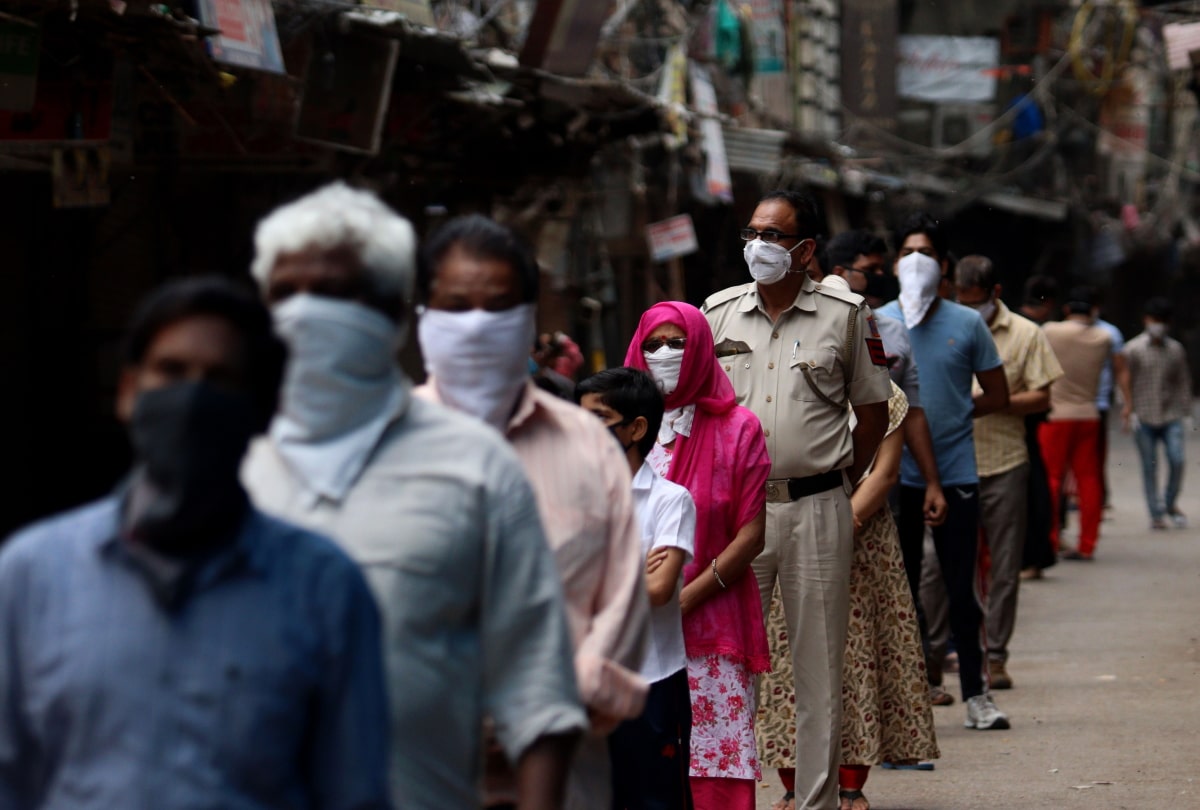There is no doubt that India’s economic development has been set back by the coronavirus pandemic. For the first time in decades, India’s economy has fallen into recession, largely due to the impact of the coronavirus pandemic on Asia’s third largest economy. India’s gross domestic product (GDP) decreased by 7.5% in the July to September quarter of 2020, compared to the same period in 2019, when it grew by over 4%, according to data from the National Statistics Office.
While this may be considered a significant improvement over a record drop in the GDP of 23.9% year-on-year in the April-June quarter, the two consecutive quarters of negative growth meant India has officially entered a technical recession.
India’s economic downturn has been attributed to the continued spread of coronavirus in the country. Currently, India has the second-highest number of coronavirus infections globally, following the US, with 9.46 million cases and 137,621 deaths.
However, the situation has improved in recent weeks. The number of new daily cases has fallen from a high of about 90,000 per day in mid-September to less than 50,000 daily by the end of October.
And the numbers continue to fall. On 8 December, India recorded fewer than 27,000 cases a day – the lowest number in almost five months. The Indian government plans to start vaccinations in early 2021 and looks forward to the positive preliminary results for the AstraZeneca vaccine as it has one of the largest orders of any country and vaccine production will be done locally.
As India tries to keep the pandemic under control, the country’s manufacturing sector posted a surprising growth rate of 0.6% during the recent quarter after a dramatic decline of 39% in the previous period. Meanwhile, the services sector reported a lower-than-expected contraction of 15.6%.
However, trade and transport continued its underperformance, down by more than 15% year-on-year despite the less strict protocols on travel. Domestic demand was also disappointing at negative 0.75% year-on-year.
India’s small businesses, the largest source of employment and a key economic growth driver, have reported very slow growths, which also affects domestic consumption. According to the International Labour Organization, the pandemic could cause 400 million people in the country to fall further into poverty.
Signs of India’s economic recovery
While the Indian economy contracted for two consecutive quarters, the decline in the rate of contraction is a sign of economic recovery, a Barclays analysis shows. The investment bank pointed out the support from the rural sector and fiscal transfers, as well as the strong recovery of manufacturing output.
Barclays has also raised its fiscal year 2021-22 GDP forecast from 7.0% to 8.5% due to the surprisingly better numbers, optimism over the availability of the vaccine, and the easing of the outbreak.
Matthews Asia’s Portfolio Manager Peeyush Mittal expressed optimism for India’s economic growth in the next six to 12 months due to three reasons: 1) the improvement of the government’s fiscal situation, 2) better-than-expected credit quality in the financial system, and 3) high-frequency indicators suggesting that the economy is at 95% of its pre-pandemic level.
Mittal emphasized the rise of the online economy in the country: “Covid-19 is driving a tremendous acceleration in the adoption of internet and online commerce in India. Whether it’s consumption of goods and services or content in the form of games and media, we are seeing rapid adoption. This has provided economic scale to many digitally native platforms and businesses in India, allowing them to now be self-funded rather than dependent on external capital.”
“Additionally, some of these digitally native platforms are planning to seek public listings starting next year, which is creating excitement that is likely to increase in 2021,” he added.
Indians have welcomed delivery services, at-home entertainment, and digital services in education, food, staples, shopping, communications, health, and fitness, according to a Morgan Stanley research report.
It also highlighted the large market opportunity in this sector as online shoppers in India only comprise 30% of its total internet users, compared with the 70% rate in the US and China. Morgan Stanley forecasts that India could have 590 million online shoppers out of 914 million internet users by 2027.
India’s e-pharmacy industry is also a promising sector. The Federation of Indian Chambers of Commerce and Industry (FICCI) and RedSeer Consulting reported that over 6 million new households have used online pharmacy services during the pandemic.
This same trend towards digitization has allowed startup companies to thrive in India. Figures of the Asian Development Bank show that India is the third-largest startup ecosystem globally, with around 26,000 startups. While the pandemic has pushed startup funding down by 29% year-on-year, startup companies are expected to grow more due to several factors, including increasing spending power, better internet connectivity, access to new consumer markets, and social media adoption.
Long-term investors have also continued to enter India, with about $50 billion of foreign direct investment (FDI) equity coming in during the year that ended in March 2020. FDI inflows have also been boosted by interest from the US, Japan, and other countries to transfer manufacturing processes to India.
However, Shilan Shah, senior India economist at Capital Economics, cautioned in a research note that the road to recovery would be a long one. “The underwhelming fiscal response to the crisis will guarantee a legacy of high unemployment and firm failures. In turn, this will inflict further damage on the banking sector, which entered the crisis in poor shape. Output should return to pre-virus level by the middle of 2021 but will remain below its pre-virus trend for several years to come.”










 Australia
Australia China
China India
India Indonesia
Indonesia Japan
Japan Malaysia
Malaysia Philippines
Philippines Singapore
Singapore South Korea
South Korea Taiwan
Taiwan Thailand
Thailand Vietnam
Vietnam Germany
Germany Hong Kong
Hong Kong USA
USA Switzerland
Switzerland Singapore
Singapore
 United Kingdom
United Kingdom







